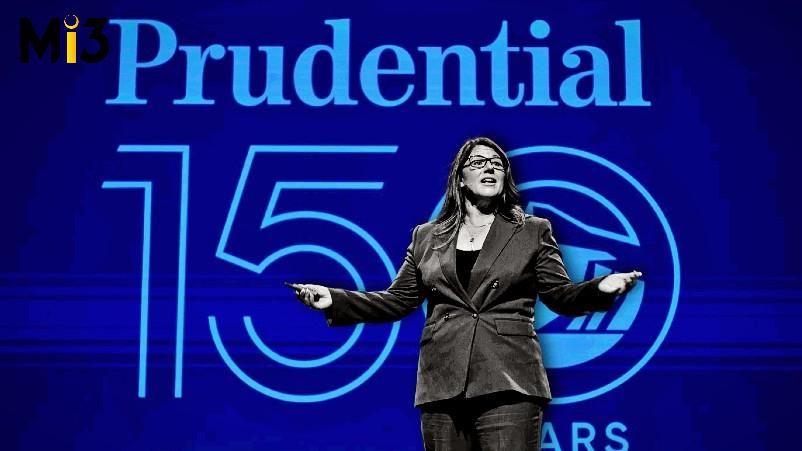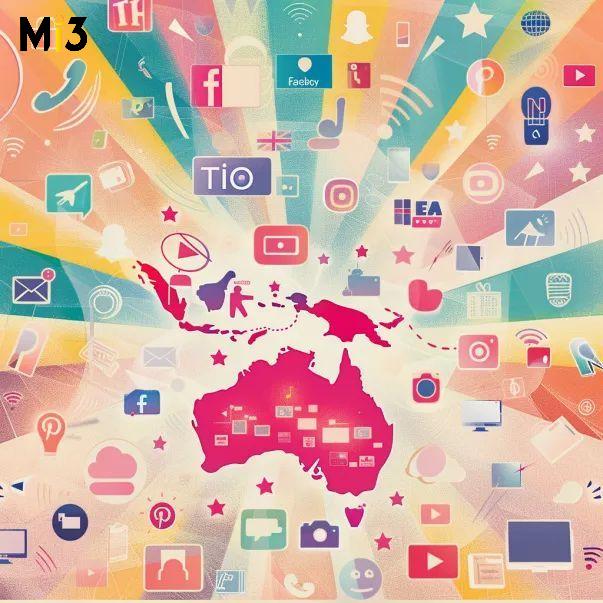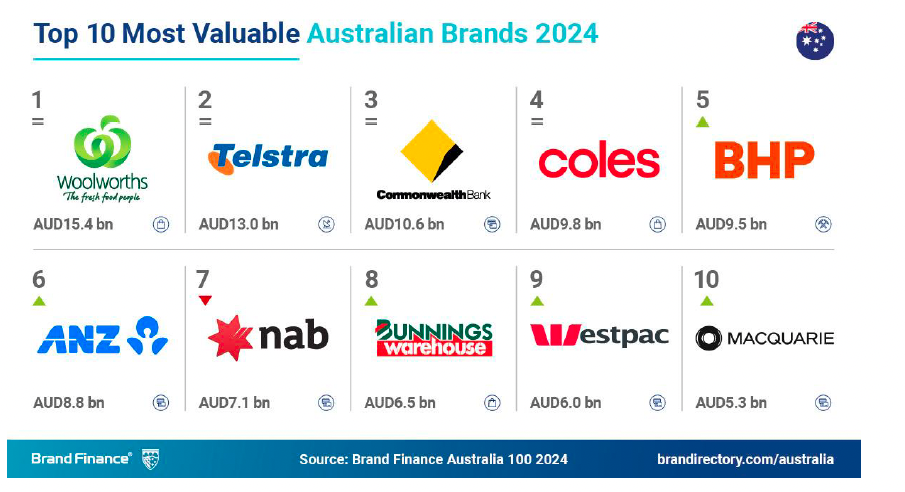‘We had those cuts, now we are hiring back creatives’: Prudential’s brand, creative VP on crucial AI lessons, 18 months in – and the mistakes to avoid

What you need to know:
- 18 months in from making the strategic decision to adopt AI in its content supply chain, Prudential is citing a 25 per cent reduction in martech vendor solutions, 3-4X faster rates of editing and revisions of creative, 70 per cent quicker time to first draft, and a 135 per cent engagement increase when Gen AI is coupled with personalisation through its Prudential.com website.
- Notably, nine out of 10 of Prudential’s 365-strong global marketing team also see savings of 25 per cent of their time thanks to AI.
- Getting to this point has been as much about technology adoption as it has been building relationships, processes and multispeed capability building that factors in the difference ways people are able to accept then adopt AI tools, says Prudential’s VP, brand, creative, Bridget Esposito.
- It’s also been critical to build the right, realistic use cases for AI. Because what worries this brand creative leader is too many leaders believe in the “magic marketing” and “terrible narrative” that AI’s direct consequence is reduced headcount. Per Esposito: “They’re underestimating that you need the people to run it, they’re underestimating the level of empathy that needs to be a part of this transformation process. It’s a major problem.”
- Instead, the financial services marketer is saying she’s back to recruiting creative headcount as demand for content and what her team delivers increases off the back of the low-funnel and foundational process and brand consistency gains made through AI adoption.
- Key to Prudential’s marketing team building the right use cases strategically have been “finding the right love language with the martech team”, and a dedicated director of AI situated in the marketing team.
There is a “terrible narrative” causing people to overindex on AI when it comes to people and staff that’s grounded in a place of efficiency gain and job cuts, Prudential’s VP of brand and creative, Bridget Esposito agrees. It’s having a detrimental impact on getting marketing teams to overtly embrace gen AI tools to improve the way they work.
“They’re underestimating that you need the people to run it, they’re underestimating the level of empathy that needs to be a part of this transformation process. It’s a major problem,” the brand and creative leader tells Mi3. “There are a lot of outside influences – consultants and things like that – saying ‘hey, do this and you can cut 70 per cent of this’. It’s not right. It’s unfortunate.”
“Magic marketing” hyping up AI and automation gains to leaders isn’t helping either, Esposito says.
“That’s why when we talk about making sure you have the right buy-in from the leadership team, it’s about the leadership really understanding what this means,” she says. “Make sure you are having the conversation with your leadership, even if you think they’re not talking about – because they are, behind closed doors, and you may not know about it – and make sure it feels realistic. Once you have those kinds of conversations, it creates this culture and environment where people feel safer to try things.”
Esposito caught up with Mi3 at last week’s Adobe Summit in Sydney after a presentation detailing how the 150-year-old financial services giant has rolled out AI across its content supply chain.
It’s a story that includes appointing a dedicated director of AI based in the marketing function with a mandate to collaborate across the business and the internal martech team. Strategic AI ownership outside the technology function has been crucial in adopting then continuing to iterate how Prudential uses AI across brand and creative work, Esposito says.
“It was a commitment we made saying we need someone to be constantly analysing the tools we have, that we’re going to get, and who is educating everyone on it. This role has played a huge part in our team and it’s been wonderful to have that collaboration outside our function as well,” she comments.
Triggers for AI adoption
Prudential has US$1.5 trillion worth of assets under management, 50 million customers in 50 countries and 365 marketers across five core lines of business, each with its own CMO. Esposito runs the centralised brand creative team encompassing creative directors, art directors, producers, writers and copywriters. She’s also been an adjunct professor at New Jersey City University for the last six years.
Ironically given Mi3’s conversation with Esposito afterwards, it was the burning platform of restructuring and reduced headcount that led the creative team to AI.
“How could we look at our brand and do more for our customers when there are less of us? We saw this as an opportunity at this moment to become a catalyst, a leader in AI-powered marketing for financial services,” Esposito told Summit attendees. The very secure financial services environment – and heavy regulation – was going to make that challenging, she said.
“We were basically saying we had to create a door where there wasn’t a door before, and keep working on that to keep pushing through it. There were times when I didn’t think we’d get through that door. It was hard. But we continued to go down that path.”
Prudential’s emphasis to date has been on employing AI to take on low-funnel, grunt work faster from copy to compliance so teams can focus on higher up, strategic work. The company uses Adobe Experience Platform as its martech foundation and to run its content supply chain, and began by taking advantage of built-in tools in Adobe Express (AI-powered design tool) and Firefly (Adobe’s generative AI models for creative production).
A first use case was creating email banners admins could self-fill – a low risk item that ensured Esposito’s team gained buy-in for AI swiftly. Organic social was the other focus within a larger goal of achieving brand consistency, internally and externally. Esposito warned adoption and AI-powered improvements don’t happen overnight, and it’s critical to take the time to find the right use cases. Hence Prudential standardising creative to brand guidelines first.
“Those people that were fighting at first? Once they realised how easy it was and how we gave them the training to be successful, that’s when we really saw some great work happening,” she said.
Custom models via Firefly for illustrations for the company website came next. “By using a custom model and training it in the right way, we were easily able to give access to people to make the right brand and visuals. Then what would happen is that it would allow people to quickly replace them. So when we go through brand refreshes and things, especially in the Prudential.com space, it became very successful,” she explained.
“Saving one hour per these illustrations when you have 85 in a week being made for our website? People agree it’s a really good result. And we would never have got there; it would have been deprioritised and the brand would not have been updated had we not had this system.”
Prudential’s other tent-pole results from AI include a 25 per cent reduction in martech vendor solutions, 3-4X faster rates of editing and revisions of creative, 70 per cent quicker time to first draft, and a 135 per cent engagement increase when Gen AI is coupled with personalisation through its Prudential.com website. Notably, nine out of 10 marketers see savings of 25 per cent of their time thanks to AI.
“We saw massive savings in the buy-in perspective too – anything from a 15 to 20-hour savings in buy-in approvals because we were able to use AI to create some of the things we needed so quickly,” Esposito added.
Make sure you are having the conversation with your leadership, even if you think they’re not talking about – because they are, behind closed doors, and you may not know about it – and make sure it feels realistic. Once you have those kinds of conversations, it creates this culture and environment where people feel safer to try things.
Ethical guardrails and continuous improvement
Meeting early and cross-functionally to decide what AI uses were and were not acceptable via an Ethics Council has been a critical step, and Prudential has drawn a line under creating people from scratch using AI.
“Your legal counsel will get more comfortable when you start to show them those use cases,” Esposito commented.
“The right education” to attain executive buy-in was another part of this story. “You need to make sure you’re taking your leadership through real education on AI. It doesn’t mean replacing creatives, it doesn’t mean you’re not going to need people to do this work. It is going to add value from the perspective of taking the lower funnel work off their plates,” Esposito tells Mi3. “The people working for us are feeling better about their jobs. They’re feeling more empowered because they’re taking back some of the work they had to do.”
There have been net new innovations too – again with human oversight. Prudential created a multisensory AI tool, Flash, allowing a customer to input a photo of themselves which the tool then ages to 70 and complements with a story based on the individual’s interests and background to predict their retirement.
“When we created this tool over a year and a half ago, AI wasn’t where it needed to be as far as that ethical standpoint. There was disparity in gender and race in different spaces, and so it wasn’t really authentic. From a brand standpoint, that’s trouble for us, because we want to make sure we’re getting the best experience no matter where we are, so customers know that when they’re working with their products and their people, it’s the same thing,” Esposito explained.
So Prudential introduced human moderation in the back end. Continued model training has seen human input go from an 85 per cent moderation rate down to a 15 per cent. “We know AI is growing, but we’ve really been diligent on making sure that we stay a part of that, and that we continue to make sure we’re keeping it in check,” Esposito said.
Get close to the martech team
Relationships have been as critical as the technology adopted, Esposito continued, and her team partners closely with the martech function.
“We had to learn how to speak each other’s love language, because the love language of a martech is very different than the love language of creative. But once we got on the same page and started to understand our goals were the same, we started having great conversations, and that’s when we really started to learn to really spread our wings and find ourselves in the right space,” she said.
Esposito’s team also found an early use-case champion in the sales enablement team via a self-serve tool. “Once she saw how she could use the templates and how easy it became… That was it. From there, we showed the next business, then the next business,” she said. “For larger things, like the AI sensory tool we created with our partner, McCann, that also became a great use case for our business leaders to say this is really great and it can make a difference.”
Esposito additionally credits the dedicated director of AI within marketing, a role which has a seat at the table for broader AI discussion managed by Prudential’s global tech team.
“Had we had that role and she wasn’t allowed at that table, it would have been terrible. There’s a larger budget for AI across the board … and there is a lot of back and forth on it. Because our director of marketing sits at that table, they can be part of those conversations around what money should be put into this, or otherwise,” Esposito said.
I see this all the time with the companies who talk to me about struggling with template creation with Adobe Express, and it’s because they haven't set up their brand framework strongly enough. If they don't set up the brand guidelines, and they don't know what's okay and what’s not okay, how can you expect to set up a system that’s supposed to be guided by yes or no?
Multi-speed adoption: Not everyone works at the same pace
It equally was critical Prudential train people in a way that met their own needs and rate of learning.
“You’ve got to make sure you are making the tools easy to access, and you got to make sure that people understand them at different levels,” Esposito advised. “You need to educate them. Not everybody can handle the right type of work as others can: With some people it becomes much harder and more difficult to use. You need to meet them where they are.”
To help, creative and martech teams created training materials so people understood how to use these tools. “The other thing it did is it trained them on what good creative looks like,” Esposito said.
“Because the one thing AI is not particularly great at yet is the storytelling aspect. That’s what we need everybody else for. When you’re using these tools, you have to be able to understand and identify what a good story even looks like. That training and understanding what constitutes good creative came just as important as training on how to actually use a tool. This actually allowed us to have some of our biggest detractors now become our biggest promoters.”
Esposito admits there have been times when it’s been hard to get AI progress work done. “I haven’t implemented as many custom models as I would have liked … You’re always going to have the give and take of it,” she says.
But what marketers can’t shirk on is making the plans, the roadmap, and getting the foundations right. “You see so many people pour money into the systems, but then they don’t set up the people in the process for the system, and they don’t realise it’s that foundational work that’s key,” Esposito says.
“I see this all the time with the companies who talk to me about struggling with template creation with Adobe Express, and it’s because they haven’t set up their brand framework strongly enough. If they don’t set up the brand guidelines, and they don’t know what’s ok and what’s not ok, how can you expect to set up a system that’s supposed to be guided by yes or no?”
Prudential is committed to investigating other tools too, and Esposito notes the team has been looking beyond the Adobe platform toolkit to secure further AI wins in brand and marketing.
“We’re testing Runway [AI video generator] currently as well against Adobe Firefly. We have to still do those things to ensure we’re looking best-in-class and it’s more secure. And we use Writer [AI agent building] quite a bit, to train language models on our brand tone and voice, and we’ve also trained them per product and on product details. But then we’ve talked to Adobe about how we make these things work together and pull into this space,” Esposito says.
“I do wish I had more creatives to allocate to this, but we just try to make sure we allocate the time against which things are really important. And of course we’re testing with our insights team, UX and CX space. There is constant testing and iteration and seeing what’s working and what’s not, and what it’s used for.”
Hiring people back
Even with the automation gains, Esposito says Prudential is needing to increase headcount. “We had those cuts, and we’re starting to hire back more creatives. The content is good, it’s fast and the business wants more of it,” she says.
“The demand for the content keeps fuelling the need for additional people. The smartest thing you can say to people scared to do this is they just need to keep educating their leaders on what’s real, and force those conversations on understanding what AI can really do, and what it can’t. Because there is a lot of marketing magic your leaders see; they see the videos, emails and believe it does this whole thing with the touch of the button, and it’s very misleading. Even if it means just showing realistic case studies and where the wins are.”
If she could redo those first 12 months, Esposito would push harder to have a full headcount to help build out the space.
“It was most strenuous on some of the creatives and the strategists to do that,” she adds. “It really needs the proper time and focus on it to build all these things. A headcount of people to build out, but also build the case studies and work with Adobe on the case studies internally for creative, but I’d also love another strategist to be fully focused on developing this out. It really is a time thing. Some is now running itself, but in the beginning it felt like we were fighting this fight between not having time to do this, but really needing to do this because of all the time we’d save if we just did this.”





